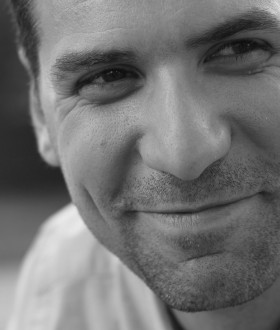Decision-making is creativity at the atomic level. We don’t often get stuck on a project, we get stuck on a decision.
There’s a reason we say that decisions are made. They don’t just emerge on their own.
Decisions are little acts of creativity and they go through the same 4 stages any other great creative work goes through:
1. Preparation: The study, the practice, the planning. Imagine the work of chopping vegetables, herbs, and meats for a great stew.
2. Incubation: What happens when you’re not consciously working on the project—the time simmering in the crockpot on the stove.
3. Illumination: The Aha! moment you have in the shower or sitting on the train on your way to the office—similar to the timer dinging after several long hours of cooking.
4. Verification: You’ve cooked the meal, now you need to serve it up to someone else to find out if you’ve created anything worth while. On your project, you may have the insight, but until you’ve put it into form—written the piece, built the prototype, painted the picture—and verified that others see the same sort of value that you do, you haven’t created anything.
What gets us stuck in any of these stages is an impatient desire to find out what works—what’s right—much earlier than we deserve.
That sort of understanding only comes at the end of the creative cycle of decision-making—and expecting it earlier is slowing you down and making you less productive.
The first stage of Preparation is critical, but in and of itself, it’s not creating much of anything. It is, however, safe—so we can be drawn into it. “I’ll keep researching, keep planning, keep exploring all the things I could do without actually doing any of them.”
We imagine that preparation itself will tell us what’s right and we get stuck because it won’t. It helps flush out the questions—but it doesn’t tell us the answers. That comes later.
Just as harmful, we often don’t give ourselves permission for the second stage, Incubation.
Neuroscientists have shown that when we stop working on a project, a separate part of our brain kicks in and starts working in the background like the elves that come out at night in the shoemaker’s shop from that old nursery tale. While the shoemaker sleeps, the elves work diligently away sewing all the pieces together.
Our brains do the same thing, building neural pathways, connecting ideas, and establishing greater knowing and understanding even though we ourselves are oblivious to the work that’s being done.
Sometimes the most productive thing you can do is to stop looking for what’s right.
There’s truth to the inverted adage, “Don’t just do something, stand there!” Sometimes, we’re better off just standing there. Or better yet—going for a walk, taking a nap, sitting on the porch with a cup of coffee (or other favorite beverage).
Unfortunately, many in our society regard rest as a luxury for the unmotivated, rich, or just plain lazy. In truth, it may be some of the most productive work we do.
But even when stage 3—Illumination— does dawn, we still won’t know what’s right, yet.
Illumination is too often misunderstood: We expect the lightning bolt ‘Aha!” moment to have certainty baked in. If only that were the case. Illumination is rarely a eureka moment like Doc Brown hitting his head in the bath and waking up with the idea of the Flux Capacitor fully formed. Much more often, Illumination comes in the form of a hunch or a suspicion—a small tweak or adjustment in perspective. “Maybe we should try….” or “What if…”
If we’re looking for certainty—for new understanding and knowing, than we must push into the 4th stage of Verification.
Verification is when we find out if the idea is right or not. Only with Verification—the act of putting our ideas, our projects, our stew—out there for public consumption do we get the reward of finding out if we were right. (It’s also when we find out if we were wrong, which is why so many avoid it.)
So, stop looking for the right decision, and start making the next decision.
The key to finding what’s right is in trusting the process and having the courage to find out what’s wrong.
Right or wrong, you’ll find yourself with more knowing and understanding. With one decision made, you can move on to the next. If you want to get unstuck on the project, keep making the decisions.












